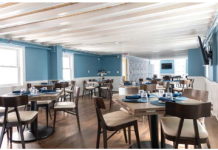You’ve found the one, and you owe Cupid a huge favor. Maybe you’ve even planned the proposal and asked her father for his blessing. No matter what your circumstances, buying an engagement ring can be a daunting and overwhelming task.
Here are some pointers to get you started in the right direction – some practical, some romantic and some steeped in history and tradition. We should know a thing or two…we’ve been helping happy couples for more than 100 years. Another good resource for unbiased and knowledgeable information is www.gia.edu.
The Top 5 Things to know before you start this amazing adventure:
What is your budget? You don’t need the exact number, but have a range in mind, be it monthly payments on an installment program, financing the entire purchase or any combination of either. You may be pleasantly surprised that financing offers now allow you to find the perfect ring for less than you may have imagined. In the end, try to purchase the nicest ring that you can afford and be sure you’re comfortable with the payment or expense; being uneasy about debt is not something you want on your mind right now.
What is her style/taste? What kind of jewelry does she already wear? Is she more classic or modern? Feminine or sophisticated? Do her pieces tend to be more delicate or chunky? Simple or ornate? Observe her demeanor, her body language, her dress and any references she makes about jewelry, fashion and style. She will be wearing this ring 24/7 every day of her life. It will need to go with everything from jeans to evening wear and everything in between. Penchant in design is often reflected in other tastes a woman has. If she prefers clean, modern lines in furniture, for example, it’s likely she’ll react well to the same aesthetic in her engagement ring.
What setting is best? While there are an unending variety of patterns, details and metal choices, there are four basic types you are likely to encounter:
Solitaire – A single stone. Still the most popular choice in engagement rings. The head secures the diamond. Prongs allow the diamond to catch the most light. A four-prong-setting shows more of the diamond, but a six-prong setting is often more secure.
Sidestone – Diamonds or other gemstones, flank the main stone for additional sparkle or color. Popular sidestone settings include “channel,” which protects stones by keeping them flush, and “bar-channel,” which allows more light to enter the sidestones.
Three Stone – Best described as, “One diamond for the past, one for the present and one for the future.” Typically, the center diamond is larger than the two side stones. The gemstones are most often all diamonds, but other gemstones can be used as well, such as a diamond flanked by two sapphires, etc.
Vintage Inspired – This includes “halo” settings that feature a center diamond with pavé diamonds surrounding it. Designs that are vintage or estate-inspired often have delicate engraving and filigree details to further enhance the ring.
Shape – Diamond shapes include round, emerald, pear, oval, Asscher, marquise, radiant, princess, heart and cushion.
Yes, the 4 C’s are really important. You don’t need to obtain a gemology degree, but you should have a basic understanding of what contributes to a diamond’s value and appearance. And as fundamental as it sounds, there ***ITALis***END a fifth “C”….Confidence in your jeweler. Ask for referrals; be sure you’re buying from a reputable jeweler who is a member of either the Gemological Institute of America (GIA) or the American Gem Society (AGS).
Carat – The concept here is straightforward: Carat refers to the weight of a diamond.
Clarity – This is the quality of diamonds relating to the existence and visual appearance of internal characteristics of a diamond called inclusions, and surface defects called blemishes.
Cut – A good cut predisposes the amount of light that can enter into the stone, refract and emit that brilliant quality that people love in a diamond. Cut doesn’t refer to the shape of the diamond, but rather the angles and proportions of the stone and if the cut isn’t right, the diamond won’t have fiery brilliance.
Color – To the surprise of many people, diamonds come in a variety of colors. Diamond color is graded on a scale that ranges from D (colorless) to Z (light yellow). Truly colorless diamonds are the most rare and most exquisite.
Are you going in solo or with your soon-to-be-bride? This is a big decision, the surprise proposal vs. the “let’s-shop-together” option. There truly is no right answer here. If you feel confident in your reconnaissance mission to understand her taste and style, you’ve done your homework on what to look for – then, by all means, skywrite the proposal and be bold. Think of the story that she will tell forever – not only did you surprise her, but you nailed it with the perfect ring. That’s a keeper.














